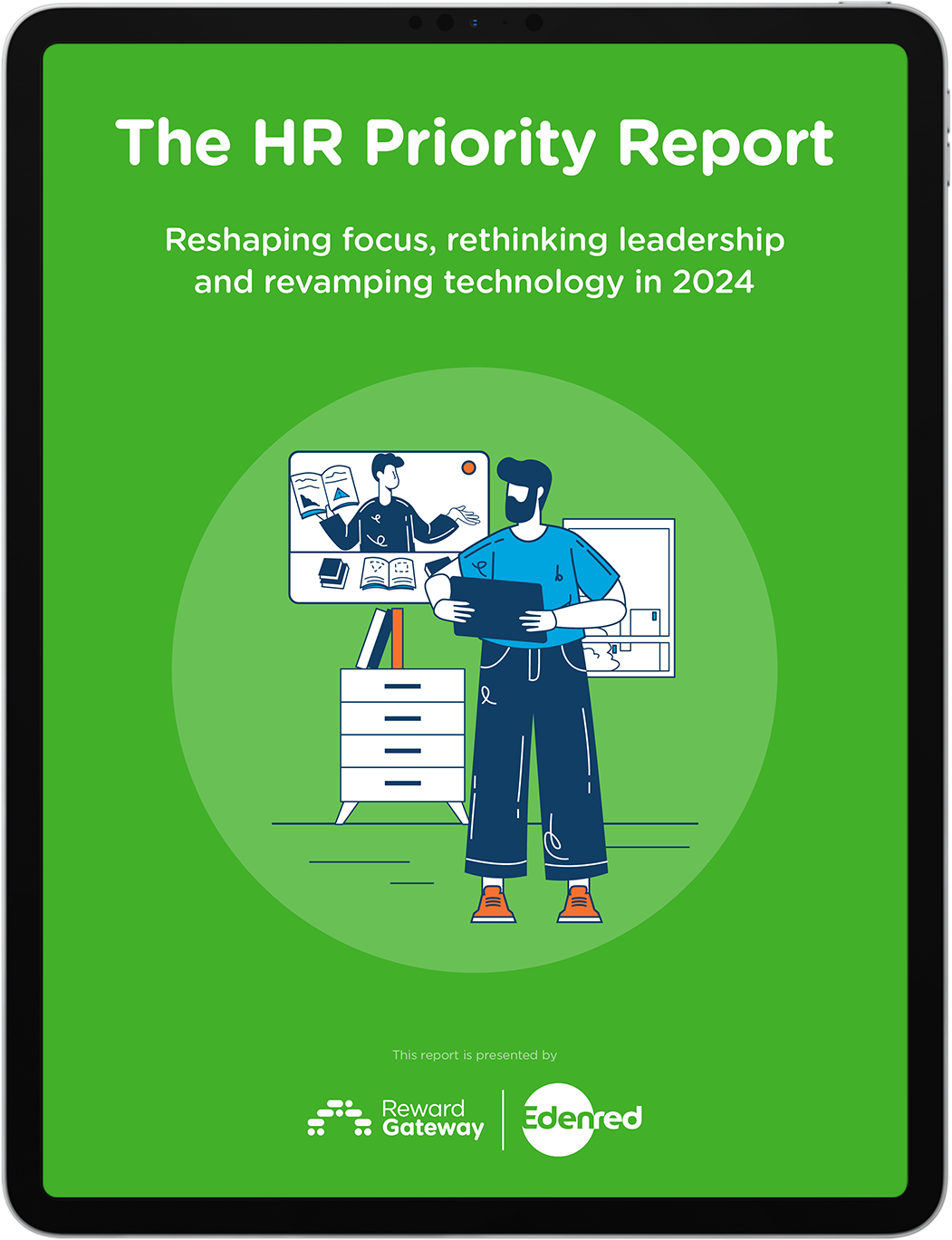There’s no denying that improving employee engagement benefits organisations in a number of different ways.
Engaged employees understand the direction their company is going in and are supportive of its mission and objectives. They know how their role contributes to the organisation’s success, and are consequently more productive, less likely to leave, and more observant of processes, standards and policies.
Despite this, our 2024 HR Priority Report found that 38% of UK employees are no longer willing to go above and beyond their specific responsibilities, a third frequently experience stress at work, and 36% consider reward and recognition to be a must-have from a new employer.
UK employees are some of the least engaged in Europe, ranking 33rd out of 38 participating countries in Gallup’s State of the Global Workplace 2023 report.
Employees are drifting into disengagement, and organisations need to act fast to turn the tide and re-engage their teams. Disengagement is not an inevitable fate, and the employers that make employee engagement a foundational part of their workplace culture are rewarded with committed, loyal, productive and connected teams.
What is employee engagement?
Before I dive into the best ways to improve employee engagement, let’s take a moment to consider what it actually is.
We focus a lot on the outcomes of engagement, such as the increased productivity, the reduced absenteeism, and the greater loyalty. But we less often pause to think about what ‘employee engagement’ means, and why it is so interconnected with motivation.
In short, employee engagement is about the relationship between an employee and their employer, where success for one means success for the other. It is built upon a foundation of mutual trust and connection.
There are thousands of different definitions of ‘employee engagement’, but the CIPD recommends one from Utrecht University’s occupational psychologists, who define it as a state of mind in which, rather than being burnt out, employees demonstrate:
- Vigour (energy, resilience and effort)
- Dedication (enthusiasm, inspiration and pride)
- Absorption (concentration and being engrossed in one’s work)
7 ways to improve employee engagement
So, you want to know how to motivate employees and improve engagement within your organisation?
The following tips are the essential building blocks of an effective employee engagement strategy, combining intrinsic and extrinsic motivators, each backed by a solid foundation of research and has been proven as a key contributor to an engaged workforce.
Let's jump in.
1. Focus on purpose, strategy and values
It’s no coincidence that the most engaged employees understand their organisation’s direction, mission and objectives.
Progress in meaningful work is one of the biggest contributors to employee motivation, so proactively highlighting the connection between day-to-day responsibilities and the organisation’s overall purpose, strategy and values is critical to improving engagement.
So much so that 63% of internal communication and employee experience professionals ranked ‘engaging teams on purpose, strategy and values’ as their top priority.
Purpose-driven employees who truly understand how their role impacts and contributes to their organisation’s success are much more likely to demonstrate the vigour, dedication and absorption that Utrecht University’s occupational psychologists talk about.
2. Create a culture of recognition
Companies succeed when their employees are motivated. And the most important motivator – more than 5 times as impactful as a pay rise or a promotion – is recognition. Employee recognition is also one of the most significant contributors to employee engagement.

Research shows 38% of UK employees consider recognition and reward to be a productivity driver, while 61% say that their work wellbeing would improve if they were simply thanked more for their hard work.
Recognition should therefore be a key building block of your employee engagement strategy. And introducing a dedicated reward and recognition platform is a great way to make it a central part of your company culture.
3. Prioritise employee wellbeing
Employee wellbeing and engagement go hand in hand. 
Yet the CIPD’s latest health and wellbeing at work survey revealed the highest sickness absence figure for UK employees in over a decade. On top of a high number of sick days, a lack of investment in wellbeing leads to higher rates of burnout, lower productivity and increased employee turnover.
Conversely, employers that make wellbeing a core part of their engagement strategies can proactively increase employee engagement and morale. So it’s no surprise that employee wellbeing is at the top of the agenda for HR managers in 2024, with 63% stating that mental health and wellness has increased in priority over the last few years.
Our employee wellbeing solution gives your employees the education, support and tools they need to be the best versions of themselves.
4. Improve internal communication
Effective internal communication sits right at the heart of any successful employee engagement strategy. It is the glue that pulls together all the other building blocks of your engagement strategy, ensuring employees are connected, informed and engaged with what’s going on.
Building an open and transparent communications culture helps employees to understand the organisation’s strategy, creates two-way feedback routes, and increases trust in leadership.
Research shows a clear link between employees’ satisfaction with the internal communication they receive and their level of engagement. And a staggering 93% of UK employees said that being listened to by leadership positively impacted their wellbeing and engagement at work.
So delivering employee feedback, encouraging meaningful two-way communication, amplifying leadership messaging, and enabling line managers to communicate more effectively all contribute to increased engagement.
5. Embrace flexibility
As organisations continue competing to attract and retain the best talent, those embracing flexibility consistently come out on top.
In a recent survey, 77% of UK employees said flexible working was more important than a pay rise, but 83% felt improvement was needed to their employer’s current approach to flexible working.
Trusting and empowering employees to complete their work duties and manage their own time without specifying things like working days, locations or shift times boosts employee engagement and improves work-life balance.
Despite a sharp rise in this type of set-up as a result of the COVID-19 pandemic, there’s still a strong demand for more roles with permanent flexible working arrangements. 9 in 10 employees are seeking these kinds of opportunities, but only 3 in 10 jobs are advertised with flexible working.
Embracing flexibility can also include giving employees more control and choice around their benefits, such as holiday trading schemes, flexible wellbeing allowances, and family leave.
6. Promote career growth and development
 Learning and development is another incredibly important employee engagement building block, with 70% of UK employees agreeing that they would be happier in their current role if they had more opportunities for personal development.
Learning and development is another incredibly important employee engagement building block, with 70% of UK employees agreeing that they would be happier in their current role if they had more opportunities for personal development.
Investing in employees’ professional development demonstrates that you value their contributions and are committed to enabling their career growth.
Providing formal training and support to help employees stay at the top of their game is a tried-and-tested way to improve retention and boost engagement. On the flip side, around 60% of employees say they would leave their company if they weren’t offered opportunities to develop.
This also extends to managers, with our 2024 HR Priority Report finding that only 21% of people managers felt they received sufficient training when they became a manager.
7. Encourage and enable collaboration
A collaborative working environment is one of the consistent characteristics across companies with the highest levels of employee engagement.
It’s widely acknowledged that effective collaboration promotes engagement, improves productivity, and helps create a positive sense of belonging.
There are lots of different ways to enable collaboration, including establishing cross-functional working groups, introducing digital workplace tools with engaging social features and connection opportunities and encouraging innovation.
Measuring the impact of your employee engagement strategy
Even the very best employee engagement strategies rely on solid measurement tools to track their impact. So the first step to improving employee engagement is always learning how to measure it.
I like to think about measurement in two categories – formal and informal.
Your formal measurement includes the metrics and data gained from things like employee engagement surveys, exit interviews and HR metrics including employee turnover and sickness absence.
The information you can gather from these ‘formal’ channels is absolutely vital in allowing you to benchmark and track engagement and measure the ROI of engagement-related initiatives. But to get the full picture I also recommend measuring informal feedback, such as employee comments, intranet pools and team check-ins, feedback from line managers and insights from HR Business Partners.
Combining all of this feedback will provide a holistic and well-rounded view of the efficacy of your current employee engagement strategy, and highlight the areas needing improvement.
Get in touch with one of our experts today to discover our industry-leading employee experience platform and its wide-ranging solutions.

 Chris Britton
Chris Britton




